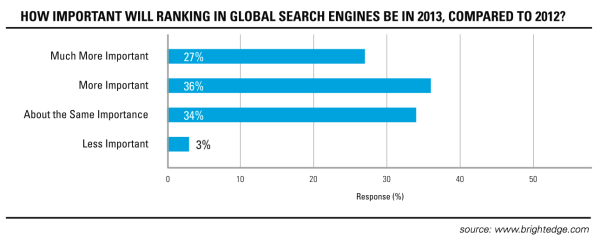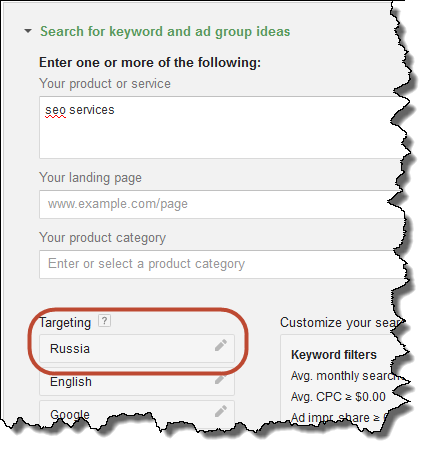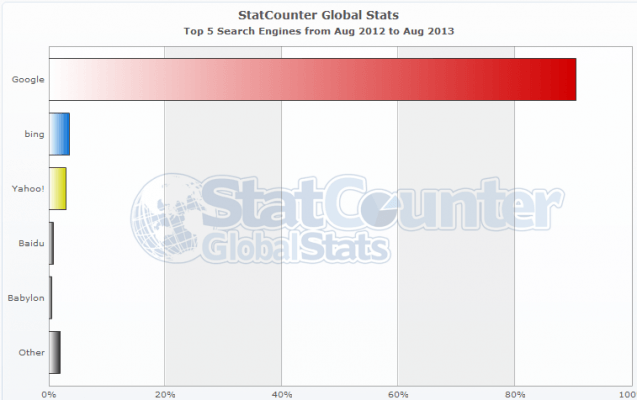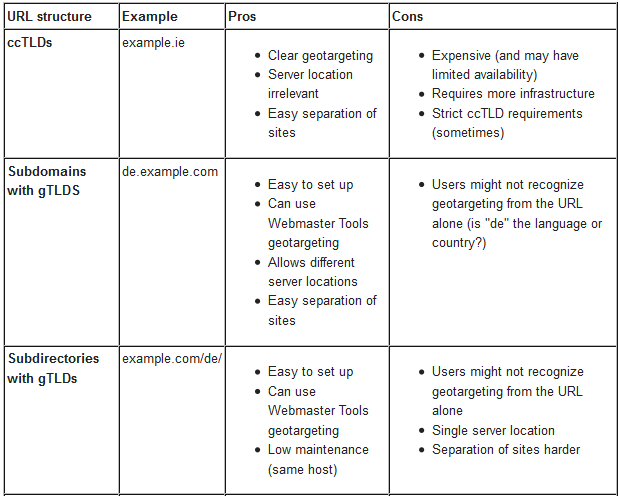
Converting a challenger brand into a market leader nationally is a difficult yet rewarding accomplishment. The dedication, expertise and investment necessary to make that happen must come together fluidly to avoid failure.
SEO can be a huge component of achieving that success by building awareness, influence and reputation of a brand.
Going global with a brand adds a whole new dynamic to its online marketing and search strategy. If leveraged the right way, SEO can prove to be invaluable in turning a local brand into a global success.
One of the most important steps in achieving international success for a brand is garnering performance of its Web properties in international search engine results. Strong organic search performance across a multitude of nations and regions will build both brand awareness and brand influence across the globe.
SEO software company Brightedge recently published a survey analyzing how various companies view the importance of ranking in global search engines in 2013 versus 2012. Sixty three percent of companies surveyed indicated they view global search engine results as a priority in their overall online marketing strategies.
Achieving global search results is an important first step for brands that wish to serve a global audience. But it is a complex goal to achieve. It involves identifying the top markets across the globe, knowing which search engines to focus on based on those markets and how their algorithms work, and how to target content for visibility in the top markets.
 Identifying Top Markets
Identifying Top Markets

For those who are not already clear on which global markets present the greatest opportunity for their brand, there are several ways to help identify where to focus efforts.
One option is to examine search demand of keywords related to the brand’s products or services in different geographic regions. Google’s Keyword Planner can be leveraged for its ability to segment different areas and see how popular your offering may be.
This can be done by leveraging the “Search for keyword and ad group ideas” feature and using the “Targeting” option to select a specific area.
Using the example of a search for the term “seo services,” we can look at the search demand in several different countries to see where more people are searching.
In Russia, “seo services” is searched 110 times per month:

Meanwhile, in Ireland, “seo services” is searched 320 times per month:

It’s important to note that this data is specific to Google, which may not be the most popular search engine in the area you are researching. Therefore, the Google data may not represent the largest sample set. Nonetheless, it can still provide a relative idea of how popular a particular product or service may be in a geographic market.
Another way to identify geographic areas of opportunity is to look at where your current web traffic and customers are coming from. Using web analytics, such as Google Analytics, one can quickly see what countries/cities visits, and even conversions, are coming from. This provides a good baseline of where to start focusing global efforts.
Which Search Engine(s) to Watch
The first step in achieving global search performance is to understand which search engines to focus on in different regions. Marketers in the United States are well aware that Google is the market leader nationally (with 78% of market share). A lesser-known fact is that Google is even more popular globally (with more than 90% of market share), according to StatCounter. Therefore, a general strategy to global search performance should focus on Google’s algorithms.
Although Google is the worldwide market leader, it’s also important to focus on search engine market share within specific regions. By researching search engine popularity within specific regions around the globe, content can be optimized specifically for the search engines with the greatest market share in those regions. For example, in China, which has a very large consumer base (more than 500 million internet users), Baidu is the leading search engine with 76% of the market share. In Russia, Yandex is the leader with 62%.
Once the most popular search engines are identified within each target region, the next step is to research the ranking algorithms of those engines. Knowing the most important ranking factors for each search engine will allow the set of content specific to that region to be best optimized for performance.

Geo-Targeting Web Properties
In order to perform well in global search engine results it’s necessary to have your website(s) set up in such a way that makes it easy for search engines to understand what region specific content is targeted to. There are a number of ways to accomplish this, with varying levels of difficulty and cost as well as impact. Content specific to different regions can be set up on different domains, subdomains or subdirectories.
Option #1: Create Country-Code Top-Level Domains
For Google, the best case scenario is to set up a unique domain for each country/region using a country-code top level domain (ccTLD). For example, my company’s website, www.MediaWhiz.com would have a www.mediawhiz.ca version, www.mediawhiz.ie version, etc. Each domain should be hosted in the country it is targeting as well, so in this example, www.mediawhiz.ie would be hosted in Ireland.
Option #2: Create Country-Specific Sub-Domains
Creating country-specific subdomains is another viable option. These will allow regional content to be hosted in the country it is targeting. The geo-targeting can also be set up in Google Webmaster Tools configuration settings by selecting the appropriate target country for each subdomain. An example would be ca.mediawhiz.com.

Option #3: Create a Subdirectory for Each Country
The third option is to create a subdirectory for each country region. These subdirectories can also be geo-targeted in Google Webmaster tools but cannot be hosted in different countries/regions. This is the easiest way to set up geo-targeting with the least amount of maintenance, but also the least effective.

Google has published a list of pros and cons of each method of setting up country/region specific content in its Webmaster Tools help section.
Depending on the method you choose it’s important to beware of duplicate content issues caused by having the same or similar content targeting different countries. In the case of Google, the way to avoid content being viewed as duplicate is to ensure it’s very clear that the different pages are targeting different countries using one of the above mentioned set-up options. The other layer is ensuring geo-targeted content is customized for the users in the geo-specific area it is targeting, which seaways into the next section.
Geo-Targeting Content
Regardless of how your regional content is set up it’s important that each piece of content is written specifically for the region it is targeting. Regions that speak the same language often speak different dialects. Geo-targeted content should do the same thing. In addition to using customized language spoken by locals in a target area, including other location cues such as addresses, phone numbers, and local currency will further signal search engines as to the target region of the content.
This customized approach to content development carries the additional benefit of resonating better with users because they feel more comfortable with messaging that is familiar to them. If someone in the U.S. was reading a product description written in an Australian dialect, they would trust it less than a product description written in an American dialect.
There are many pieces to achieving global success of a brand that must be executed in aggregate for maximum impact. SEO, however, can be a huge part of it and a strong starting point.



